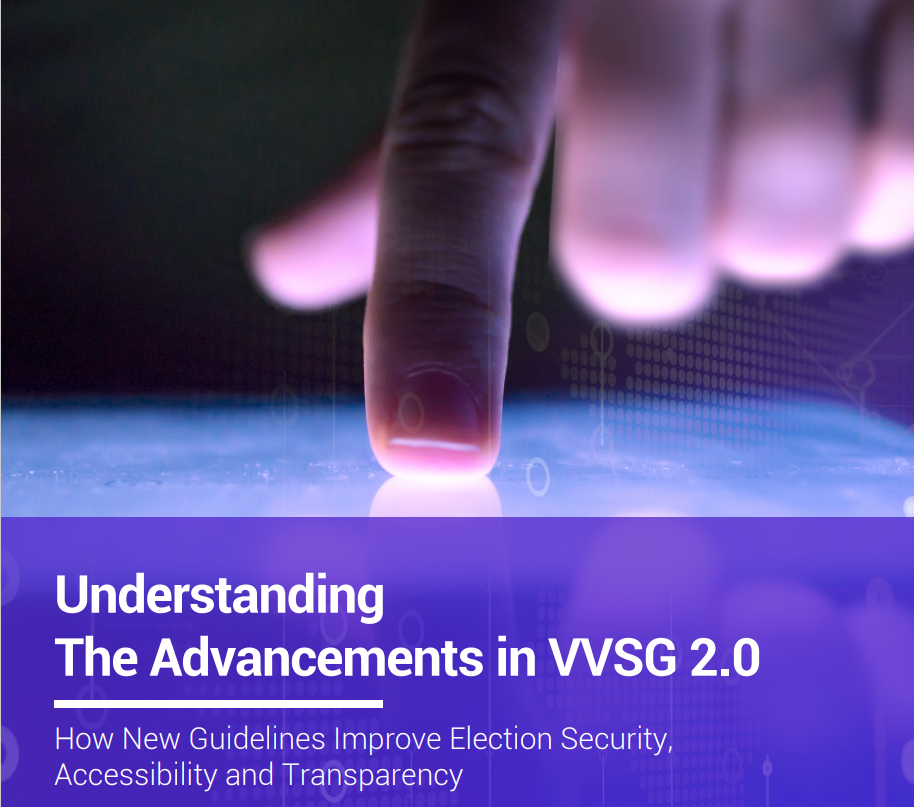
As the United States approaches the 2024 Presidential Elections, a new era of strengthened election integrity emerges. Following this pivotal vote, jurisdictions across the country will begin adopting heightened standards in equipment design and development, ushering in an unprecedented rigor to the voting process.
The new Voluntary Voting System Guidelines (VVSG 2.0), ratified by the United States Election Assistance Commission (EAC), represent a pivotal advance in the modernization, security, and resilience of U.S. elections, contributing to their overall trustworthiness. These guidelines encompass every aspect of the electoral cycle, with a focus on improving security, accessibility, and transparency, thereby bolstering public confidence in the electoral system. It is expected that, as new equipment is developed and certified under these standards, jurisdictions will reap the benefit of improved election integrity.
Nations around the world, in their quest to enhance electoral processes, often look to leading democracies for insights and best practices. However, it’s important to understand that the new US guidelines, while a significant step forward, are not a universal solution.
The VVSG 2.0, crafted by and for the unique intricacies of the US electoral infrastructure, may not be entirely applicable in different international contexts. Each nation has its own set of challenges and requirements that need to be thoughtfully considered when adopting or adapting such standards. In fact, some countries are advancing certain phases of their elections more rapidly than the new US guidelines propose.
The online voting guidelines serve as a case in point. Acknowledging the growing interest in secure remote voting options, VVSG 2.0 opens the possibility for the certification of online voting mechanisms. Yet, the new framework does not provide sufficient guidelines on how to guarantee a successful deployment of online voting. Jurisdictions wishing to adopt online voting, would do well to look at Estonia, the world’s most successful online voting platform.
One aspect that has seen considerable advancement in the VVSG 2.0 is software independence—a feature that ensures voting systems can produce verifiable paper records. These paper records, important regardless of software reliability, play a pivotal role in facilitating recount and audit processes.
Software independence has been a contentious issue worldwide, with various countries taking divergent approaches to its implementation. Brazil and India, two nations that emerged as early adopters of electronic voting in the late 1990s, have found themselves at opposite ends of this discussion. India began incorporating printers into its voting machines in 2014 to produce a paper trail for every vote, thus providing a means for physical audits of election results. On the contrary, Brazil has refrained from following this path and continues to use paperless voting machines, thereby placing its trust entirely in the electronic system. Belgium and Bulgaria are two European countries that have sided with the US in terms of software independence.
In addition to software independence, the VVSG 2.0 guidelines introduce many other security enhancements. Data encryption and the use of digital signatures for election artifacts and data in transit are explicitly mandated. The guidelines also call for more stringent physical security measures, including reinforced protection for ballots and data ports and heightened monitoring to prevent unauthorized use.
The newly established guidelines are poised to modernize U.S. election systems substantially. The collaborative effort, which engaged all principal stakeholders –from vendors and local jurisdictions to government agencies—highlights a widespread commitment to election integrity. Following the completion of the 2024 election, the U.S. will be well-positioned to embark on a new era of robust election integrity.
For a more comprehensive analysis of the improvements, check our paper ‘Understanding The Advancements in VVSG 2.0’